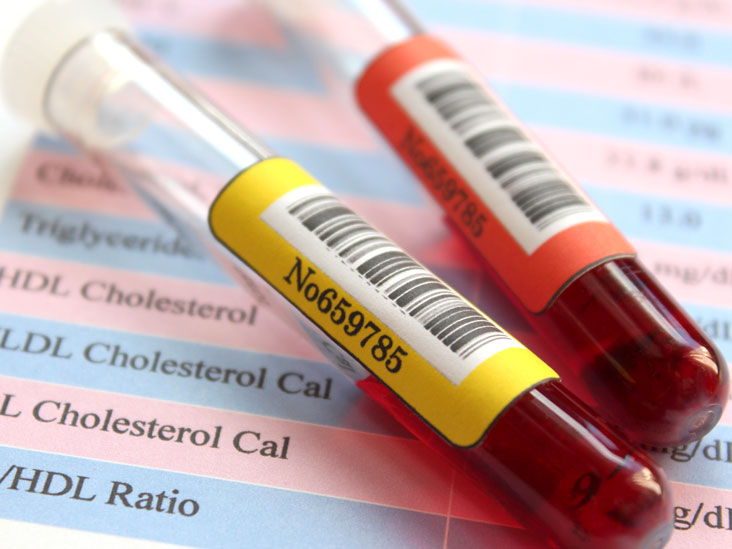Preventive Healthcare
Lipid Profile Test: Normal Range, What It Is, Purpose, Preparation & Results
268005 Views
0

Lipids are the fatty acids and their derivatives that are present in our bodies. Not all lipids are bad; in fact, lipids play a pivotal role in the functioning of the body as they are a part of the cell membranes and hormones, provide cushioning, and are a storehouse of energy. High levels of certain kinds of lipids, however, are harmful, especially to cardiovascular health. The lipid profile test measures the different types of lipids in our bodies. Read on to know more about the lipid profile test, its significance, preparation, and results.
What is a Lipid Profile Test?
A lipid profile test is a blood test that measures different types of lipids in the blood. The lipid profile test is also known by the names of a lipid panel, lipid test, cholesterol test, etc. It measures the levels of four different types of cholesterol and triglycerides.
- LDL (low-density lipoproteins): LDL is the cholesterol that is considered "bad cholesterol" because it forms plaques in the arteries and adversely affects heart health. Thus, LDL cholesterol should be maintained in the lower range.
- VLDL (very low-density lipoproteins): VLDL appears in the blood soon after we have consumed food. A lipid profile is done as a fasting test, and thus, if there is an increased level of VLDL in the blood sample, it can be suggestive of some metabolic disease.
- HDL (high-density lipoproteins): HDL cholesterol is also known as "good cholesterol" because it helps clear away the bad LDL cholesterol and prevents its build-up.
- Total cholesterol: It is the sum of all the different types of cholesterol in your body, i.e., LDL + VLDL + HDL.
- Triglycerides: Our body converts the excess calories into triglycerides and stores it as body fat. High levels of triglycerides are harmful to the heart, liver, and pancreas.
Why is the Lipid Profile Test Performed?
A lipid profile test is performed to find out about your cardiovascular risk factors. Elevated cholesterol levels can indicate that you might be at a higher risk of suffering from heart issues such as atherosclerosis, hypertension, heart attack (myocardial infarction), or stroke.
High cholesterol levels do not cause any visible symptoms. Thus, physicians use the lipid profile test to screen and monitor the lipid levels in the blood and detect elevated levels early on before they adversely affect cardiovascular health. The lipid panel is also used as a tool to:
- Diagnose other conditions such as fatty liver or pancreatitis.
- Monitor the effectiveness of cholesterol-lowering medications if you are already on treatment for high cholesterol.
- Monitor the progression of hyperlipidemia if you had abnormal lipid profile tests previously.
Who Needs to Have a Lipid Profile Test?
You should have a lipid profile test if:
- You are a male over the age of 45 or a female over the age of 50.
- You are a smoker.
- You are obese.
- You have hypertension or diabetes.
- You have an immediate family member with a history of heart disease at a young age (below 55 years for males and below 65 years for females).
Children can also have high cholesterol levels due to genetics or being overweight. Guidelines suggest that males in the age range of 45–65 years and women in the age range of 55–65 years should have a lipid panel test every 1–2 years and every year after the age of 65.
How is a Lipid Profile Test Performed?
A lipid profile test is a blood test. To perform this test, a lab technician ties an elastic band on the upper arm and you are asked to make a fist. This ensures greater blood flow into the veins. The skin around the vein on the arm is cleaned to prevent any infection, and the needle is inserted into the vein. Blood is then drawn using a syringe, and the sample collected is sent to the laboratory for analysis. It usually takes 1-2 days for the test results to come.
How Much Does the Lipid Profile Test Cost?
The lipid profile test price is only Rs. 800 at Metropolis Healthcare, which is a pathology specialist in India.
Is There Any Special Preparation Required for the Lipid Profile Test?
Yes, fasting of 10–12 hours is required before the lipid profile test. The results are accurate if this test is performed on an empty stomach. Thus, it is generally done in the morning after overnight fasting. Water is allowed during the fasting period, but no tea or coffee.
How to Interpret the Results of the Lipid Profile Test?
The lipid levels are measured in milligrams per deciliter of blood. The normal values for different types of lipids are as follows:
- Total Cholesterol: Less than 200 mg/dL.
- HDL (high-density lipoproteins) cholesterol: More than 60 mg/dL.
- LDL (low-density lipoproteins) cholesterol: Less than 100 mg/dL; less than 70 mg/dL for people with diabetes.
- Triglycerides: Less than 150 mg/dL.
The values of different lipids determine if you are at a low, borderline, intermediate, or high risk of developing cardiovascular issues. Usually, higher than normal LDL cholesterol, total cholesterol, triglycerides, and low HDL cholesterol levels indicate increased risk.
What is the Next Step if You Have an Abnormal Lipid Profile Test?
An abnormal lipid profile test, i.e. elevated LDL, total cholesterol, triglycerides, and/or low HDL levels, does not always mean that you require treatment for it. The values considered abnormal depend on several other factors. Your physician will look at your lipid levels and decide if it warrants treatment after taking into consideration your age, family history, medical history, the medications you are on currently, etc.
You can bring your lipid levels down by making some healthy lifestyle modifications such as dietary changes, exercising regularly, and losing weight (if overweight). If your physician deems it appropriate, he will prescribe you some cholesterol-lowering medications to help decrease cholesterol levels and reduce the risk of cardiovascular diseases.
Your healthcare provider may suggest repeating lipid profile tests at regular intervals for monitoring purposes.
Conclusion
It can be stressful to receive any abnormal test results. However, abnormal lipid profile results are not always concerning. Your cardiovascular risk is determined by several other factors apart from cholesterol levels. Your physician is the best judge to decide if you need treatment for your lipid levels.























 WhatsApp
WhatsApp